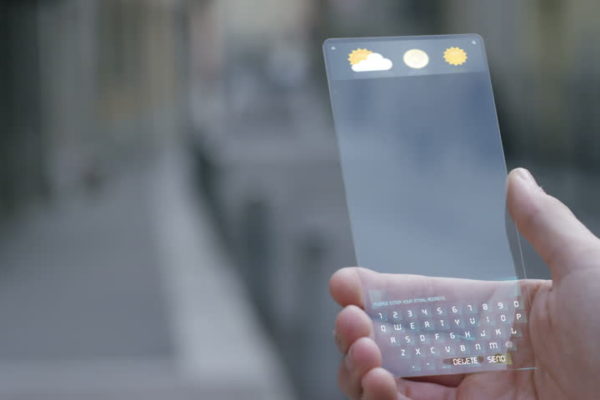The Internet has revolutionized world from the very beginning of its invention and over the years has incorporated and brought newer and path-breaking technological advancement with them. Wireless communication through handheld devices is one of them and internet has also started to be provided to our mobiles phone through these wireless networks has been a major change in the game.
The GSM sim cards in our mobile phones receive the world of internet through the mobile towers spread across us and they transmit the data at a certain frequency. This frequency travels at a speed and this speed and technology they offer todepend on the band of frequency they are transmitting at. At the very beginning when 2G was invented it suddenly boosted the mobile internet browsing experience as consumers were experiencing never before seen speed. From time to time this technology got more advanced and we moved from 2G to 3G and now to 4G. Where 2G used to offer maximum 7MB per the second 3G went up to 43MB per second while 4G pushed the limit to as high as 150MB per second.
So, what next then, obviously we can say 5G would be the next milestone and already the buzz is around the world to develop the 5G technology and make it available to consumers as soon as possible. We even already have some 5G ready latest mobile phones coming out in the market in the flagship segment. Let’s discuss more elaborately about the 5G technology.
What is 5G?
It is believed when 5G would be here than data can be transmitted through the wireless mode in a speed as high as 20GB per second which is any means far higher than its immediate predecessor 4G. Thus, it will provide much higher bandwidth as it will use more advanced antenna technology. It also has a lower latency those earlier technologies. 5G will not only offer higher speed to the consumer but will also comfort providers as now they will be able to create more virtual networks inside a single existing hardwired 5G network.
Thus, these virtual networks could be used by businesses dedicatedly for their communication which will be only for the business to use. For example, the smart appliance in your home or a bot delivery system will require a virtual network to operate seamlessly and thus a separate virtual network by the brand which owns the product or service will be used by them in real time to operate. A home appliance was can work on slow network the bot delivery system will need a faster accurate network. It won’t happen in a day or two but will take few years to have 5G infrastructures across everyplace. Now let’s see how the 5G operates.
How 5G will work?
In general, a network comprises of various cell sites which are further composed of sectors and these sectors actually emit radio frequency waves. The very noticing difference between 4G and 5G will be that wherein 4G we need big mobile towers will heavy network receivers and booster, for 5G small boxes will be needed and can be planted on electric poles and pillar thus saving huge infrastructure costs.
In place of big towers, we will have multiple such units placed at smaller distances reason being the frequency bandwidth that 5G uses actually can travel only shorter distances thus to avoid obstructions we need those units at a more frequent distance in compared to 4G. The industry is also doing research to find a way to implement 5G in the spectrum frequency they already owe; it can compromise a bit on the speed but will no longer need a completely new setup,to begin with. The countries which are front-runners in the development and implementation of 5G are United States of America, Korea, China,and Japan.
They have already spent millions and expected to spend billions in setting up infrastructure to build a 5G network with no guaranteed returns on these investments. As mentioned, some are doing R&D in fitting 5G technology in the same 4G hardware like the 4G radio devices as believed not to be compatible with 5G signals but efforts are being made to make them compatible with some software patching or small upgrade.
5G services which we can expect and by when
5G services, when implemented, will not only feed to customers through cell phone technology but will also cater them through fixed-line broadband services. Fixed services are considered to be cheaper to implement and we can hope to get these services earlier than mobile technology.
Providers will be required to deploy signal receivers and boosters at smaller distances which in most cases they are already doing for broadband but will need to replace their existing lines with fiber optics which eventually reaches out to every household. Mobile services, on the other hand, can be expected to be rolled out by end of next year and at the same time, we can also expect the availability of all types of 5G enabled and compatible devices to be available in the market. So, it’s a wait and watches game till that time.
Risks involved in 5G
Due to the more penetrating wavelength of frequency 5G can be hazardous for our mother nature especially birds. As we all know that mobile frequency does harm birds and that is the reason why we do not see so many birds in urban areas as birds cannot bear the electromagnetic frequency mobile signals emit and their brain starts to malfunction causing confusion and head spin. Recently 5G was going through a trial run in Netherlands and thousands of birds fell from the sky and died during that test. 5G frequency can also cause damage to our eyes as well.
Conclusion
At last we can say that technology is important and we must and will move to 5G to unleash the revolution in wireless connectivity and data transfer but at the same time should keep in mind the adverse effects that it may cause and should work toward that as well so that it becomes a win-win situation for us in all ways.





